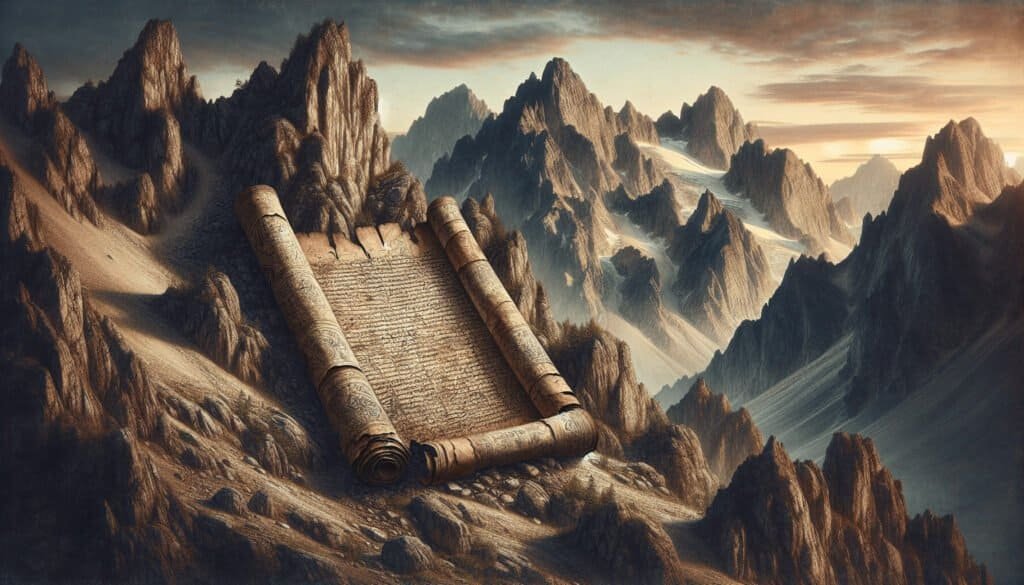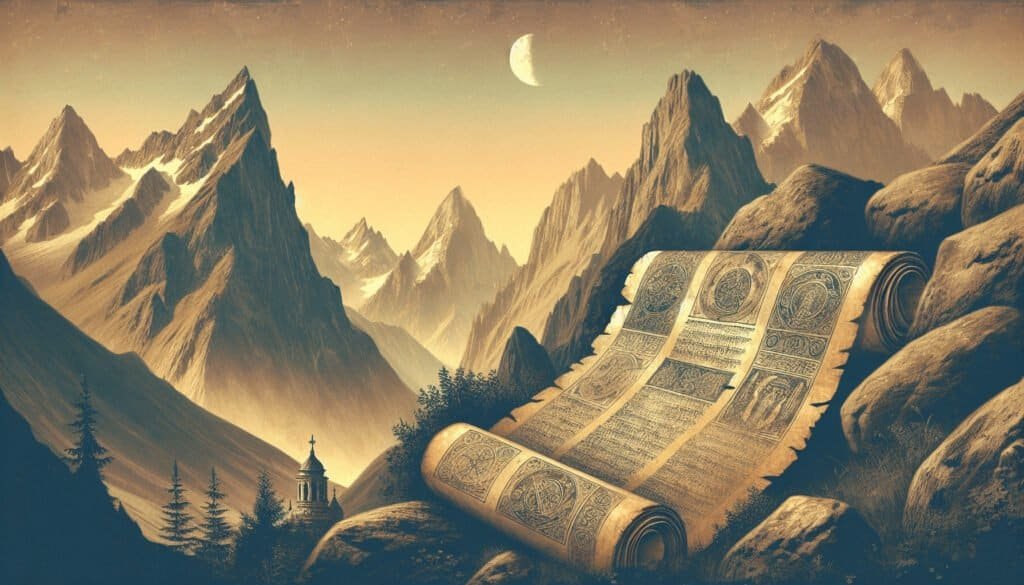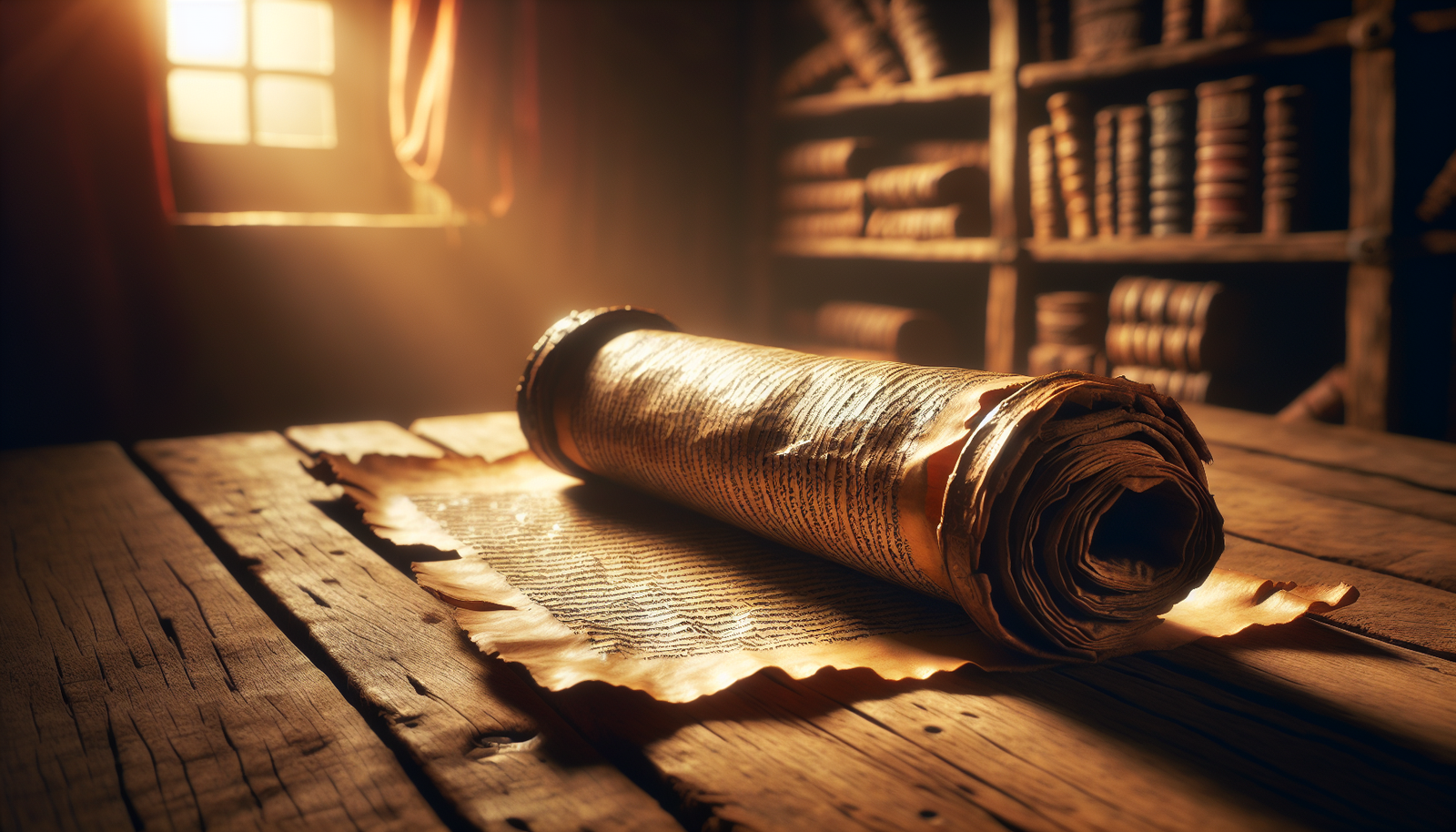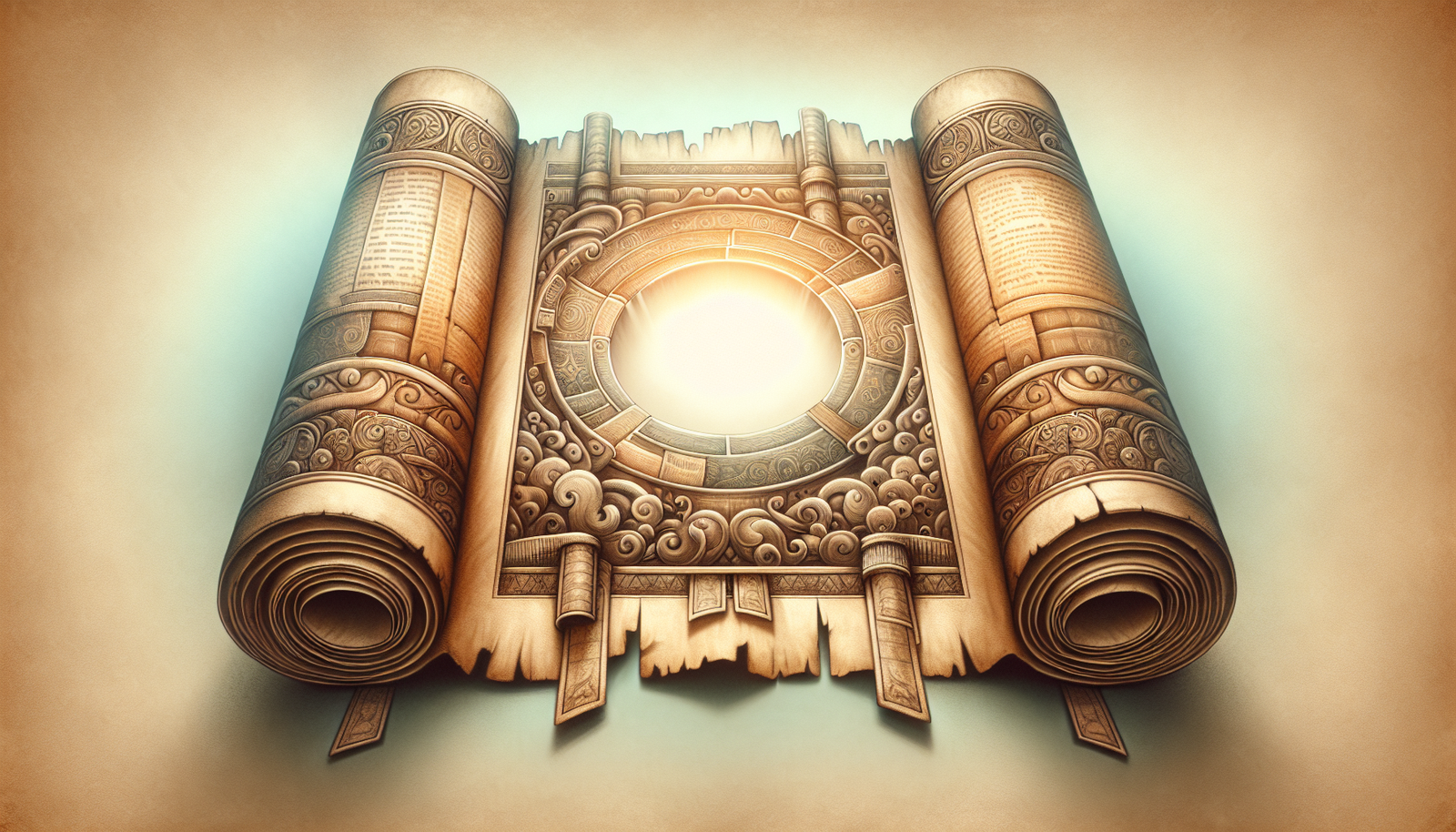Have you ever wondered what stories lie hidden in the dusty recesses of ancient scrolls? Imagine unraveling a past so rich that it connects you with the very roots of humanity. As you journey through the Mountain Corridor, you’re not just traversing a physical space; you are stepping into a narrative steeped in the memories of biblical patriarchs. In this exploration, whispered tales of wisdom and lessons from history beckon you. Let’s set off on this intricate journey to discover the fascinating intersection of history, archaeology, and reinterpretation of religious texts.

Introduction to the Mountain Corridor
In today’s fast-paced digital world, we often overlook the lessons of history. The Mountain Corridor serves as a reminder of a time when wisdom wasn’t buried under piles of data, but rather preserved in the hearts and scrolls of our ancestors. This corridor, both a physical and a metaphorical gateway, connects various significant biblical sites in the region. Here, ancient scrolls whisper the names of patriarchs who laid the foundation for countless cultures and belief systems.
Understanding this corridor isn’t merely about the past; it’s about the implications it has today in our understanding of spirituality, culture, and humanity itself. So, what exactly is hidden within these ancient scrolls?
The Historical Context of the Mountain Corridor
Ancient Civilizations and Their Legacy
The Mountain Corridor is steeped in the history of various ancient civilizations. From the Canaanites to the Israelites, rich narratives tell of journeys, conquests, and divine interventions. Each community that trod these paths left imprints not only on the geographical landscape but also on the cultural memory.
- Canaanites: Known as the earliest residents, their myths and stories helped shape the region’s identity.
- Israelites: Central figures in biblical history, their narratives form the bedrock of the biblical texts that many adhere to today.
The Role of the Patriarchs
Let’s not forget the patriarchs—Abraham, Isaac, Jacob, and Joseph—whose legacies are intertwined with the land. Their journeys through the Mountain Corridor were not just physical; they navigated faith, dilemmas, and relationships, leaving behind traditions that practitioners still resonate with today.
- Abraham: Considered the father of monotheism, his covenant with God established a legacy that still echoes in various faiths.
- Isaac: Often viewed as the bridge between the patriarchs, his life symbolizes faith amid trials.
- Jacob: His twelve sons are said to represent the tribes of Israel, deepening the historical roots in this area.
By understanding the role of these patriarchs, you gain insight into not just a historical timeline but a living tradition that inspires modern faith and moral frameworks.
The Significance of the Faded Scrolls
What Are the Dead Sea Scrolls?
The discovery of the Dead Sea Scrolls, an assemblage of texts found in caves near the Dead Sea in the mid-20th century, revealed a treasure trove of ancient wisdom. These scrolls included biblical texts, sectarian writings, and other documents that speak volumes about the beliefs and practices of the time.
- Scriptural Texts: Many scrolls contain text from the Hebrew Bible, giving invaluable context to modern interpretations.
- Historical Documents: These writings shed light on the daily lives, rituals, and communal obligations of those living in the era.
The Role of the Scrolls in Understanding the Patriarchs
The faded scrolls serve as invaluable links to understanding the patriarchs better. Through them, you can appreciate the faith, struggles, and societal norms that shaped their existence.
- Cultural Reflections: The scrolls reveal how patriarchs dealt with conflict, family dynamics, and divine commandments.
- Theological Insights: By studying these scrolls, you learn the theological evolution that these figures inspired over centuries.
Unraveling Archaeological Findings
Key Discoveries in the Mountain Corridor
As you delve into the archaeological evidence surrounding the Mountain Corridor, notable discoveries illustrate the deep connections between the physical landscape and the biblical narrative.
- Ancient Ruins: Structures that date back to the times of the patriarchs provide a glimpse into their daily life and societal structures.
- Artifacts: Pottery, tools, and remnants of ancient settlements help reconstruct the lives of those that walked these paths.
The Impact of Archaeology on Biblical Understanding
Archaeologists have worked tirelessly to piece together the lives of the patriarchs through these findings. Each brick and relic serves as a metaphorical breadcrumb that leads you further into understanding the complexities of their lives.
- Historical Accuracy: The correlation between archaeological findings and biblical accounts lends credibility to the ancient narratives.
- Cultural Interpretations: Artifacts tell not just a story of survival but also of belief, craftsmanship, and social hierarchy.

The Intersection of Theology and Archaeology
How Archaeology Enriches Spiritual Life
While archaeology provides tangible links to the past, it also challenges and deepens your spiritual experiences today. By confronting these ancient stories, you find a relevance that emerges through exploration.
- Faith and Evidence: The discoveries affirm faith for some, while challenging others to reconcile belief with historical context.
- A Living Faith: Engaging with ancient texts invites you to see your faith as part of a broader narrative rather than a standalone doctrine.
Dialogue Between Science and Belief
Institutions and scholars around the world are initiating dialogue between scientific findings and religious beliefs.
- Collaborative Research: Scholars are increasingly working with religious communities to reinterpret findings in light of faith.
- Integrative Teaching: Educational programs are emerging that teach biblical history with an eye toward archaeological evidence.
The Cultural Significance of the Corridor
A Tapestry of Traditions
The Mountain Corridor isn’t just a historical montage; it’s rich in cultures that have melded and diverged, influenced by the same narratives of the patriarchs.
- Diverse Practices: Different faiths—Judaism, Christianity, and Islam—share common roots in these narratives.
- Preservation of Heritage: Local communities honor this legacy through festivals, rituals, and storytelling that keep the memory alive.
Modern Implications of Ancient Stories
In today’s world, the stories from ancient scrolls still hold resonance. Their teachings on morality, ethics, and community continue to provide guidance.
- Ethical Teachings: The lessons from the patriarchs offer timeless advice that can guide personal and communal decisions.
- Cultural Identity: For many, these stories form the backbone of cultural identity, connecting the past to the present.
Personal Reflections: What These Discoveries Mean For You
Understanding Your Own Roots
As you grapple with the history of the Mountain Corridor, consider your roots. How do the lessons from these patriarchs influence your own life? Reflection can help create a personal connection to these ancient teachings.
- Personal Stories: Just as these patriarchs faced challenges, you’re also navigating your own struggles, drawing parallels that resonate.
- Cultural Heritage: Revisit your own heritage and uncover stories that may reveal shared themes and lessons.
Engaging with Spirituality
The journey through the Mountain Corridor isn’t just about academic pursuit; it’s about enriching your own spiritual practice. Engaging with these narratives allows you to reflect on your beliefs and deepen your understanding of your faith.
- Personal Growth: Through this exploration, you might find a renewed commitment to your beliefs, inspired by the lives of the patriarchs.
- Communal Engagement: Sharing these insights with your community can foster deeper connections and stimulate enriching discussions.
Conclusion: Tying Ancient Contexts to Modern Perspectives
As you finish this exploration of the Mountain Corridor, remember that you’ve just scratched the surface of an intricate tapestry. The patriarchs’ memories preserved in faded scrolls and archaeological findings transcend time. You find not just echoes of the past but a vibrant connection to modern life.
This journey reminds you to appreciate your roots, recognize the importance of history, and embrace the ongoing conversations between past, present, and future. Each story and artifact serves as a reminder of the collective legacy you carry. In understanding the paths walked by the patriarchs, you also navigate your own journey, enriched by the wisdom of your ancestors and the lessons etched into these ancient scrolls.
So, when faced with the complexities of modern life, reflect on the lessons from the Mountain Corridor. They are not merely tales of antiquity; they are guiding lights that can inspire and shape your path forward.



